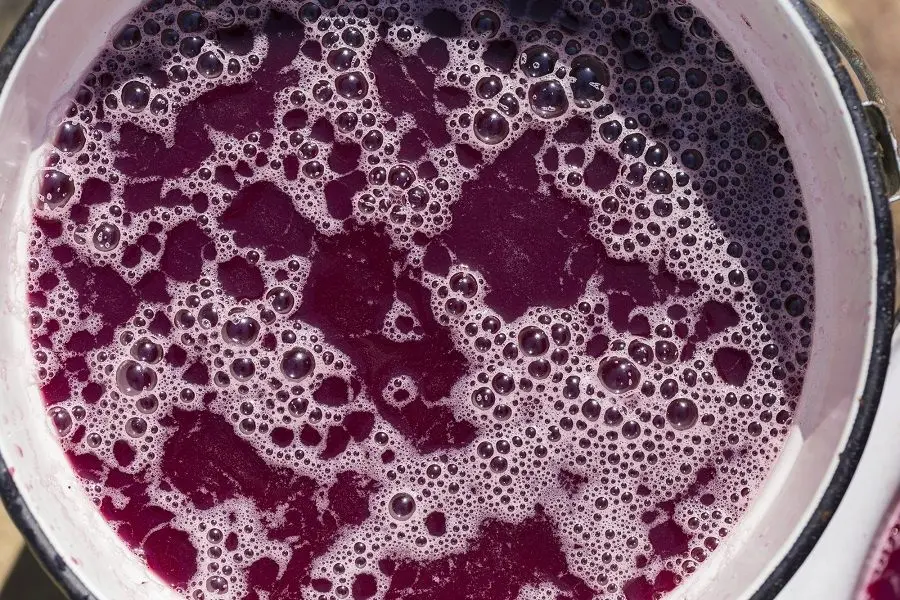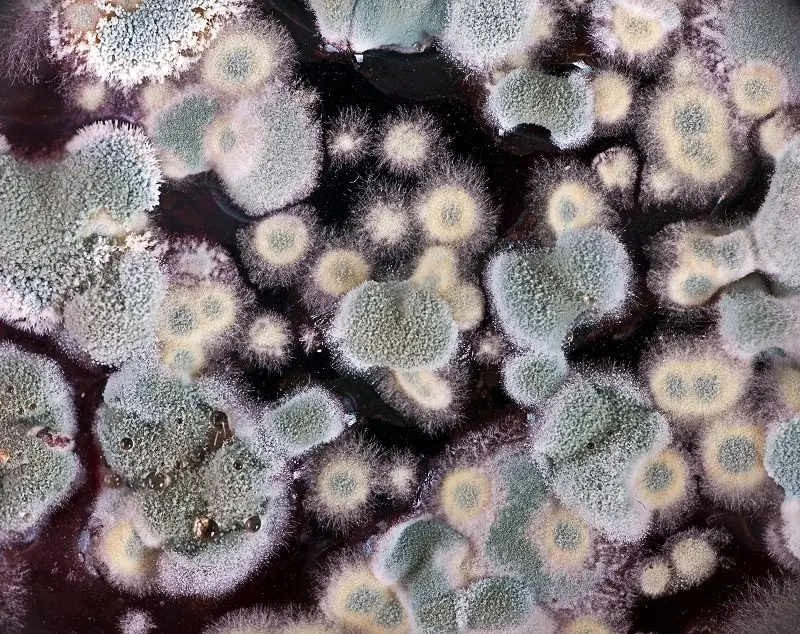Contents
Exact adherence to the recipe does not guarantee that homemade wine will ferment normally. There are situations when this process does not start or suddenly stops after a few days. Do not panic, in most cases the situation is fixable. I will tell you why the wine does not ferment and what needs to be done to save the must. The following options are possible:
1. Little time has passed
Do not expect that immediately after installing the water seal, the wine will begin to gurgle. Yeast needs a certain amount of time to activate. Depending on the temperature, the raw materials used, the sugar content and the type of yeast, it may take from several hours to 3 days before active fermentation begins.
Solution: subject to all the conditions for making wine, wait 3-4 days and only then draw conclusions.

2. No sealing
A problem often encountered by beginner winemakers. If the container is not hermetically closed, then there will be no bubbles in the water seal (the glove will not inflate), since carbon dioxide escapes out in other ways. It turns out that the wine plays, but this is not visible.
With a decrease in the intensity of fermentation, when the pressure of carbon dioxide drops, the current situation is dangerous because air enters the container, which leads to acetic souring of the wine, which cannot be corrected. A bottle of wine can be opened, but only 1-2 times a day for a short time (up to 15 minutes), for example, to add a new portion of sugar or remove foam.
Solution: check the tightness of the fermentation tank at the points of its connection with the water seal (glove). For greater reliability, cover the joints with dough or other natural adhesive.
3. Improper temperature
The most common reason why wine stops fermenting. Wine yeast is active at 10-30°C. In the cold, they “fall asleep”, and at a higher temperature they die. The recommended temperature for fermentation is 15-25°C. It is very important to avoid even small differences. If the wine starts to ferment at 20°C, this value must be maintained. It is unacceptable when the temperature is constantly changing, for example, day and night.
Solution: check the room temperature. If it does not meet the recommended parameters, move the container to a more suitable place. If, even for a short time, the must was at a temperature above 30°C, you should add a wine starter or a new batch of special yeast (not alcohol!!!).
4. Low or high sugar content
The optimal sugar content in the must is 10-20%; in all other cases, the wine ferments poorly. At low sugar content, the yeast has no product to process, so it stops. At very high concentrations, sugar becomes a preservative that stops the yeast from working.
The sugar content is checked with a special measuring device – a hydrometer or to taste. The wort should be sweet, but not sour or cloying.
Another similar problem is too thick consistency, which appears when working with fruit and berry raw materials (mountain ash, bird cherry, currant, etc.), which is difficult to mechanically filter. Thick wine may not ferment.
Action: Check sugar content and consistency. If the must is cloying or very thick, dilute it with water (sour juice), adding no more than 15% of the original volume. With low sugar content, add sugar at the rate of 50-100 grams per liter of juice.
5. Bad yeast
Wild yeast strains, which are used by the vast majority of amateur winemakers, are characterized by their instability and can stop working at any time, even for no apparent reason.
Actions: to resume fermentation, add to the must to choose from: home-made sourdough, store-bought wine yeast, unwashed crushed grapes (5-6 berries per 10 liters) or high-quality raisins (20-30 grams per 5 liters). I advise you to buy raisins and grapes at the market, where they are treated less with chemicals that kill all the yeast on the surface. The best option is to make a sourdough.
6. Mold
Appears in the case of using rotten (moldy) wine material or poorly washed fermentation containers, hands and other devices. Therefore, it is very important to sterilize everything so as not to infect the wort with fungi. At the initial stages, mold in wine can be cured by removing the film and pouring the wine into another container through a straw. But there is no guarantee that this will help.

Solution: pour out the spoiled wort, take into account the mistakes and not repeat them in the future.
7. Lack of nitrogen elements
For normal reproduction and vital activity, wine yeast needs nitrogen compounds. Usually the right trace elements are present in the juice in the right amounts. Problems arise if the juice is heavily diluted with water and/or sugar to reduce acidity.
With a lack of nitrogen, fermentation is active for the first few days, then it slows down for no apparent reason (temperature, sugar and alcohol content are normal).
The problem is typical for homemade wines made from cranberries, blueberries, blueberries, lingonberries, wine drinks made from flowers and vegetables, or in the case of very acidic raw materials heavily diluted with water and sugar. Store-bought wine yeast usually comes with the right micronutrients. They feed drinks based on sourdough and wild wine yeast.
Solution: add ammonia or ammonia to the wine according to the instructions on the link. These substances are sold in pharmacies.
8. End of fermentation
At an alcohol concentration of 10-14% vol. wine yeast is killed. It is impossible to obtain a stronger wine by the method of natural fermentation; alcohol is added to the drink to increase the degree.
In most cases, homemade wine ferments for 14-35 days, then this process gradually stops. Sediment appears at the bottom of the container, the wine is clarified, and the water seal does not blow bubbles (the glove deflates).
Actions: go to the next step – filter the wine and put it on maturation. The ultimate goal has been reached.









